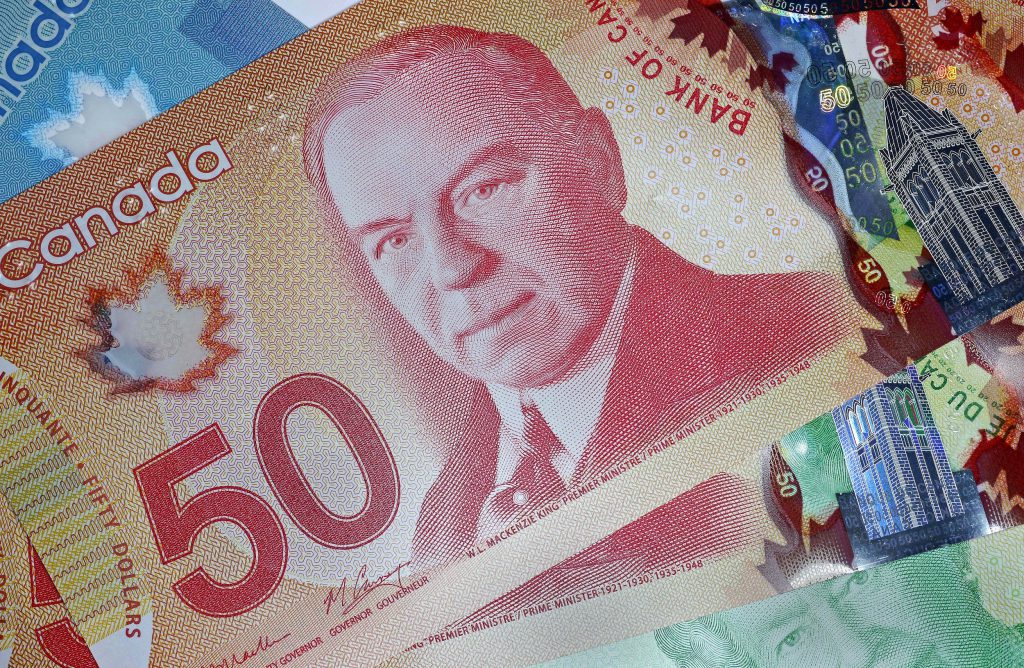After selling off sharply during the New York session, U.S. equity markets recovered marginally, as trading drew to a close on Wednesday evening. The NASDAQ closed down -0.79% and the SPX down -0.69%, after both indices had registered daily losses of circa -1.00% at one point during the session. The SPX is up 8.00% YTD (year to date) in 2019, falling back from a circa 13% gain earlier in the year. Price fell back through the 100 DMA, for the first time in four months and briefly fell through the 200 DMA, as price printed a daily low of 2,765, before recovering late in the session to 2,780. The NASDAQ has also receded sharply over recent days/weeks, from circa 20% gains, to 13.75%. The price of Apple, one of the key FAANG stocks in the tech index, fell through the 100 DMA, whilst printing a low not witnessed since early March.

President Trump’s comments; that China and the USA were far away from agreeing a compromise, added to the state run People’s Daily newspaper of China, implying that the Chinese authorities could restrict global access of rare earth minerals, caused a revisit of the risk off tone, which returns whenever the subjects of “tariffs” and the “trade war” are discussed in the financial mainstream media.
As the global reserve currency, investors occasionally take refuge in the U.S. dollar; at 22:00pm U.K. time on Wednesday, the DXY index, which measures the value of the greenback against a basket of its peer currencies, traded at 98.17, up 0.22%. Investors also sought out the safe haven appeal of: yen, the Swiss franc and gold, during Wednesday’s trading sessions; gold traded at $1,284 per ounce, up 0.16%.
At 22:15pm EUR/USD traded down -0.26%, at 1.113, as the bearish price action, in a wide daily range, saw price breach the second level of resistance, S2. The euro endured a negative trading day versus the majority of its peers. The jostling for political position which has begun, as the European elections have concluded, have added a fresh layer of uncertainty to the Eurozone trading bloc, as certain political parties (who made gains) are trying to push home their advantage. Italy’s deputy prime minister Salvini, is attempting to pressure the E.U. and E.Z. into allowing Italy to break the fiscal rules regarding debts and deficits, apparently in order to alleviate poverty and unemployment, in certain Italian regions.
Germany’s unemployment readings missed the forecasts when published on Wednesday, adding to the negative sentiment for investors in Eurozone equities. Unemployment rose by 60k in May, whilst the unemployment rate returned to 5.0%. The German DAX index experienced a significant slump, closing the day out down -1.57%, whilst France’s CAC fell by -1.70%. The U.K. FTSE closed down -1.15%, reducing the YTD gains for the main British index to 6.80%.
The Canadian dollar experienced increased speculation once the interest rate decision had been broadcast by Canada’s central bank, the BOC. The overnight rate was kept at 1.75%, however, the Governor of the bank, Stephen Poloz and his team, delivered a monetary policy statement shortly after the meeting, which could be described as dovish. Certainly the BOC are in no rush to raise rates further and the indication from the BOC is that any other decision, over the short to medium term, would involve a rate cut. At 23:00pm, USD/CAD traded at 1.351, up 0.17%, as price oscillated between the first two levels of resistance, R1 and R2, spiking up through R2 briefly, as the interest rate decision was released to the markets.
Thursday’s key economic calendar events mainly involves the USA economy. The latest GDP growth rates will be released at 13:30pm U.K. time; Reuters forecast a fall from 3.2% to 3.1% annualised, for the first quarter of 2019. Growth for the first quarter is forecast to come in at 0.9%. Investors, FX analysts, traders and political commentators, will carefully monitor the readings for signs that the USA economy has avoided self inflicted economic wounds, as a consequence of the confrontation, the Trump administration has created with China.
If the forecast is missed, the value of USD and U.S. equities could come under pressure, if narrative quickly develops that the tariffs, first applied in Q3-Q4 2018, are causing USA economic damage. The advanced goods trade balance deficit for the USA, is forecast to have worsened for the month of April, to -$72.3b. Jobless claims are expected to show moderate increases, whilst pending home sales are predicted to fall to 0.5% in April, from the 3.8% rise in March.


